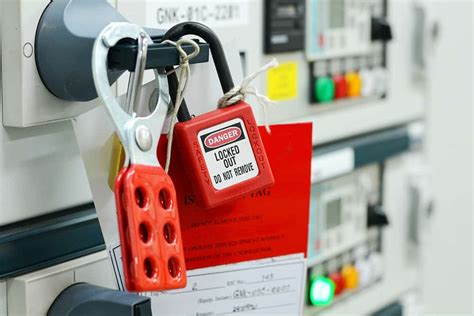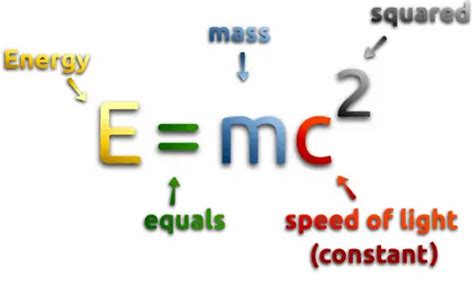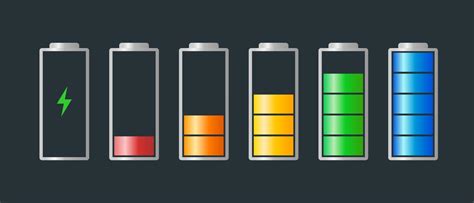Energy control and power lockout solutions are critical components in ensuring the safety and efficiency of industrial operations. The primary goal of these solutions is to prevent unauthorized access to electrical systems, thereby reducing the risk of electrical shocks, arc flashes, and other hazardous incidents. In this article, we will delve into the world of energy control and power lockout solutions, exploring their importance, key components, and best practices for implementation.
Key Points
- Energy control and power lockout solutions are essential for ensuring industrial safety and efficiency
- Lockout/tagout (LOTO) procedures are a crucial aspect of energy control, involving the isolation of energy sources and application of locks and tags
- Power lockout devices, such as circuit breakers and fuses, play a vital role in preventing unauthorized access to electrical systems
- Regular training and maintenance are necessary to ensure the effectiveness of energy control and power lockout solutions
- Compliance with regulatory standards, such as OSHA 29 CFR 1910.147, is essential for implementing energy control and power lockout solutions
Understanding Energy Control and Power Lockout Solutions

Energy control refers to the process of controlling and managing energy sources in industrial settings. This includes electrical, mechanical, hydraulic, and pneumatic systems, among others. Power lockout solutions, on the other hand, involve the use of devices and procedures to prevent unauthorized access to these energy sources. The primary objective of energy control and power lockout solutions is to ensure the safety of workers, prevent equipment damage, and reduce downtime.
Lockout/Tagout (LOTO) Procedures
Lockout/tagout (LOTO) procedures are a critical aspect of energy control. LOTO involves the isolation of energy sources and the application of locks and tags to prevent unauthorized access. This procedure is typically performed during maintenance, repair, or servicing of equipment. The steps involved in LOTO include:
- Notification: Informing affected workers of the impending lockout/tagout procedure
- Shutdown: Shutting down the equipment or system
- Isolation: Isolating the energy source
- Lockout: Applying locks to prevent unauthorized access
- Tagout: Applying tags to indicate that the equipment is locked out
- Verification: Verifying that the equipment is safe to work on
Power Lockout Devices
Power lockout devices, such as circuit breakers and fuses, play a vital role in preventing unauthorized access to electrical systems. These devices are designed to interrupt the flow of electrical energy in the event of an overload or fault. Other power lockout devices include:
- Disconnect switches
- Energy-isolating devices
- Valves and valve locks
| Device Type | Description |
|---|---|
| Circuit Breakers | Automatic devices that interrupt electrical energy in the event of an overload or fault |
| Fuses | Devices that melt and interrupt electrical energy in the event of an overload or fault |
| Disconnect Switches | Devices that manually interrupt electrical energy |

Implementation and Maintenance of Energy Control and Power Lockout Solutions

The implementation and maintenance of energy control and power lockout solutions require careful planning and attention to detail. This includes:
- Conducting regular training sessions for workers
- Performing routine maintenance and inspections of equipment and devices
- Ensuring compliance with regulatory standards and guidelines
- Developing and implementing effective lockout/tagout procedures
Regulatory Compliance
Compliance with regulatory standards and guidelines is essential for ensuring the effectiveness of energy control and power lockout solutions. In the United States, the Occupational Safety and Health Administration (OSHA) regulates energy control and power lockout solutions under 29 CFR 1910.147. This standard requires employers to develop and implement energy control programs, including lockout/tagout procedures, to protect workers from hazardous energy sources.
What is the primary objective of energy control and power lockout solutions?
+The primary objective of energy control and power lockout solutions is to ensure the safety of workers, prevent equipment damage, and reduce downtime.
What is lockout/tagout (LOTO) and how does it work?
+Lockout/tagout (LOTO) is a procedure that involves the isolation of energy sources and the application of locks and tags to prevent unauthorized access. The steps involved in LOTO include notification, shutdown, isolation, lockout, tagout, and verification.
What are some common power lockout devices used in industrial settings?
+Common power lockout devices used in industrial settings include circuit breakers, fuses, disconnect switches, energy-isolating devices, and valves and valve locks.
In conclusion, energy control and power lockout solutions are critical components in ensuring the safety and efficiency of industrial operations. By understanding the importance of these solutions, implementing effective lockout/tagout procedures, and maintaining regulatory compliance, employers can protect workers from hazardous energy sources and prevent equipment damage. Remember, a well-planned and well-executed energy control and power lockout solution can mean the difference between life and death in industrial settings.



